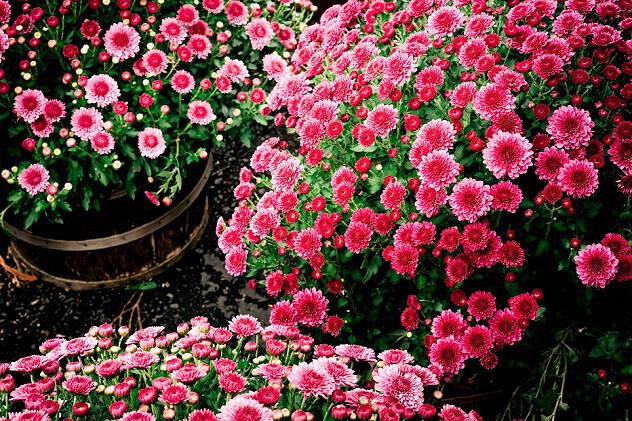Whether you're a fan of early, mid-season, or late bloomers, here's what our garden experts say you need to know about planting, growing, and caring for mums.

Few things evoke the spirit of fall like a colorful assortment of mums in the garden, but helping them weather the winter, spring, and summer in order to return next autumn can be tricky for even the most seasoned of green thumbs. "Mums are the most exciting looking when they are in bloom, and the blooms will only last about four weeks," says garden and landscape designer Amber Freda. "However, people often have a hard time getting mums to bloom as well as they did the first year."
Gardeners tend to purchase flowering mums during the fall season—to enjoy the blossoms—but if planted incorrectly, their chances for survival and return are slim. "The plant is putting all its energy into the flowers instead of its roots and is less likely to survive harsh winters," explains Melinda Myers. "This is especially an issue for northern gardeners where winters are worse." How does one properly plant a mum to ensure it withstands the winter? We asked our garden experts for advice on planting mums like a pro, and here's what they had to share.
Consider Hardy Mums (Over Florist Ones)
Myers says "hardy" or "garden" mums will flower during darker periods more than ones of the "florist" variety. "That means they will start flowering before frost and snow begins to fall," she says. "Many gardeners try to save gift (florist) mums to grow in their gardens, but these often need longer dark periods and won't start flowering, especially in the north, until the growing season is almost over—or has ended."
Plant Mums in the Spring
Though they bloom in the fall, if you want healthy mums that return each fall, your best bet is to plant them in the spring. Doing so means they have time to establish their root system before flowering, says Myers. "An established mum plant has a deeper root system and more reserves to help it survive winter," she says. "Mulching the plants with evergreen boughs after the ground freezes will also help increase their hardiness."
Plant Mums in Full Sun—and Water Accordingly
When given proper moisture, our garden experts say planting mums in full sun conditions will help them thrive. "Mums need full sun, about five to six hours per day, at the minimum, to really bloom their best," Freda says.
"Water thoroughly when the top few inches of soil are crumbling and start to dry," Myers adds. "Avoid wet soggy soil (which can cause the roots to rot), especially in the winter."
Choose the Right Fertilizer (and the Right Time to Mulch)
According to Myers, high nitrogen fertilizer can promote leaf and stem growth over flowering—which can be counterproductive for your mums. "Fertilize with low nitrogen slow release fertilizer," she says. "And if you choose to mulch your plants with evergreen boughs, do this after the ground freezes. If done too soon you create a wonderful habitat for hungry critters and the goal is to keep the soil consistently cold—not alternating between freezing and thawing, which can damage the plants."
Pinch Properly
To keep your mums looking bushy and full, Freda says you will need to cut them down to about two inches high after they finish blooming. "Then, in the spring, once the shoots are about four to six inched high, you will want to pinch them back just under a set of leaves, leaving two to three sets of leaves on each stem," she says. "You need to keep doing this every time the plants get in the four- to six-inch-tall range, and then stop pruning completely by mid-July so the buds can begin to form."